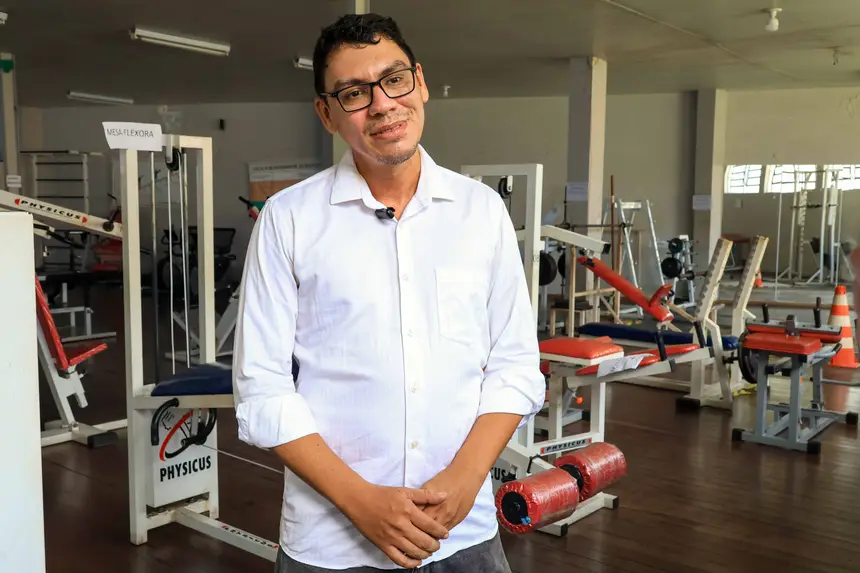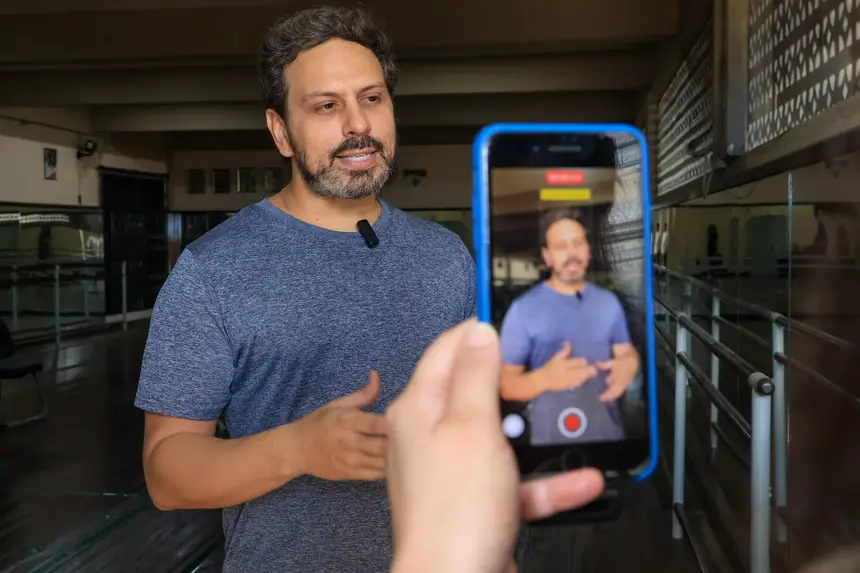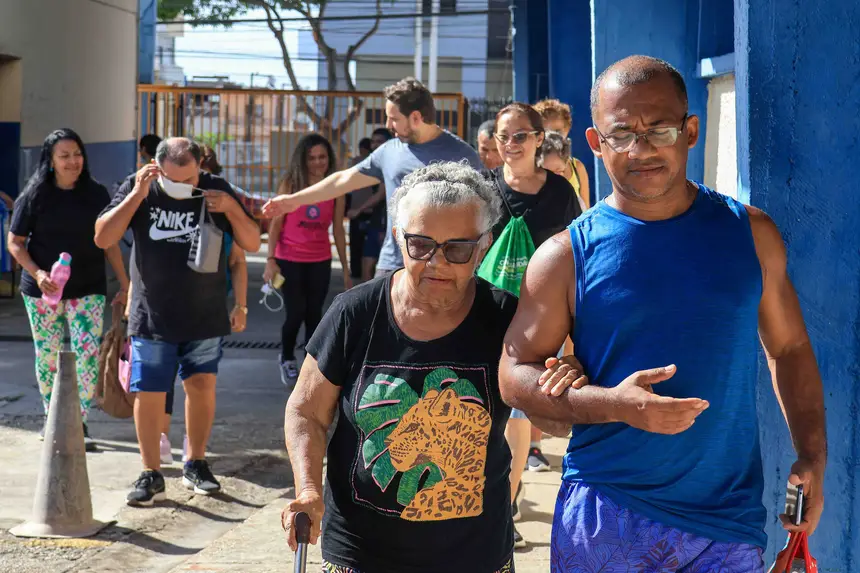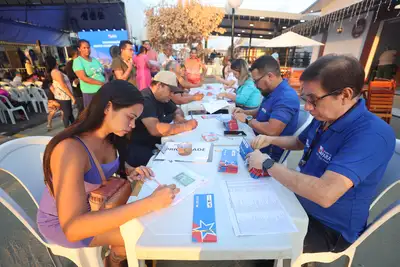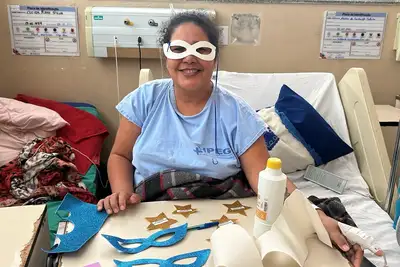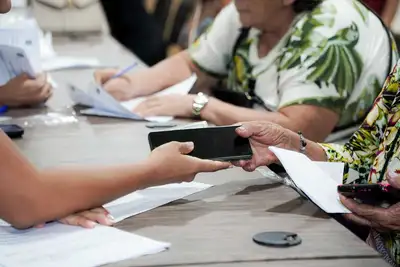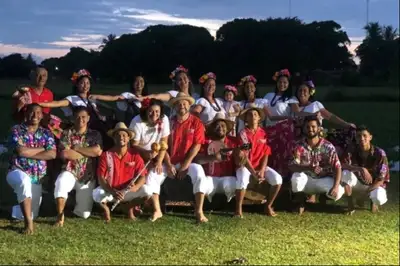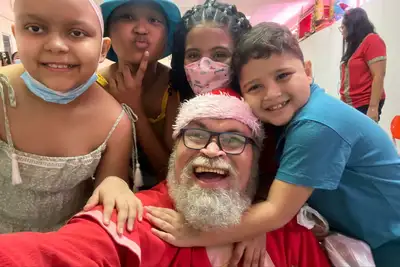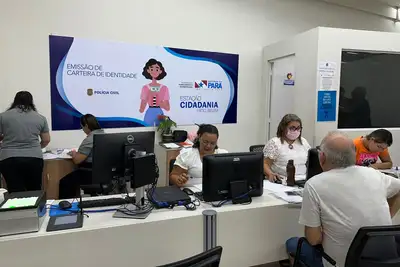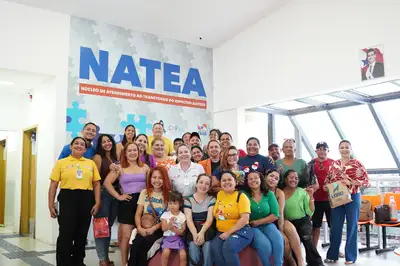Uepa projects change the lives of patients with Parkinson's Disease
Activities developed aim to improve the quality of life of patients
“Those who sing drive away their troubles”… And those who dance do too. At least that’s how Professor Carlos Guzzo Júnior, coordinator of the Flui Parkinson project, thinks. Together with eight students from the Physical Education undergraduate course at the State University of Pará (Uepa), he involves a group of ten patients aged between 50 and 80 years, diagnosed with Parkinson's Disease, in dance activities — mainly Amazonian dances — aiming to manage symptoms of the disease, such as muscle stiffness and slowness of movements, to improve the quality of life of these individuals.
The project was created to analyze and evaluate the influence of dance as a physical practice on both motor and non-motor symptoms, with an emphasis on the cognition of the person with Parkinson's Disease. “This research stems from my doctoral thesis, where I developed a specific protocol for Amazonian dances, since dance is already recognized as a factor that brings improvements, being a multimodal practice. That is, by working with various stimuli, such as auditory, kinesthetic, tactile, etc., it has the capacity to positively influence the symptoms of the disease,” details Professor Carlos.
One of the dancing patients in Flui Parkinson is Benedita Couto Paes, 80 years old, who was diagnosed with Parkinson's 13 years ago. Mother of five sons, Dona Benedita moves with the support of a cane and with the help of her son Urbiracy Paes, one of the youngest twins. He is the one who accompanies his mother in all activities aimed at seeking quality of life, despite the disease. Regarding the symptoms, he reports that the most evident is the tremor. He also observes that “sometimes she becomes aggressive,” but emphasizes that her memory is very good and her reasoning is quick: “she does mental math!” he joyfully shares.
Good-humored during the interview, when asked if she would agree to give her testimony, she promptly replied: “yes, it’s important for us to help.” Helping has been part of her professional universe throughout her life as an administrative assistant at the Municipal Emergency Room of Belém, where she worked. After the diagnosis, she has participated in various types of physical activity, but had been inactive for six months and became excited about the possibility of joining the dance process for free, while also contributing to the development of observations and studies.
In the case of Mr. Antônio Sérgio Gonçalves, 66 years old and diagnosed three years ago, in addition to the affected motor condition, he suffers from nighttime agitation that prevents him from sleeping. Maria de Lourdes Garcia, married to him for 35 years, recounts that her husband was “a great dancer,” who always loved to dance and played soccer every weekend. Originally from the municipality of São Caetano de Odivelas, in northeastern Pará, Antônio Sérgio worked in the production of grids and had a highly sought-after workshop until he had to withdraw from work activities due to the disease.
“It takes strength, it takes determination, it takes drive always”
Parkinson's is a degenerative neurological condition that primarily affects the control of body movements. It is characterized by tremors, muscle stiffness, slowness of movements (bradykinesia), and balance problems. The disease progresses slowly and, although there is no cure, there are treatments to manage the symptoms and improve the quality of life of patients.
And, in the case of these patients, it is also necessary to have strength. That’s why Professor Erik Artur Cortinhas Alves, a doctor in Molecular Biology, has been developing the Resisted Physical Exercise project for People with Parkinson's Disease since 2017, focusing on resisted exercise, usually associated with weight training.
Professor Erik Alves, linked to the Graduate Program in Rehabilitation and Performance, explains that “we all need strength for everything. Physical exercise is a challenge to our physiology.” He points out that the patient with Parkinson's Disease becomes sedentary not by choice, but due to the symptoms that lead them to a sedentary lifestyle. And, by becoming sedentary, these patients lose various physical capabilities, including strength. Therefore, the goal of the project is to contribute to the quality of life of participants, enabling them to have the strength to carry out daily activities.
Currently, the project is in the phase of recruiting new volunteers who have a diagnosis of Parkinson's Disease and are using prescribed medications. Those interested in participating in these weight training activities should be available on Tuesdays and Thursdays, starting at 8 a.m.
Another project in the same line, which is also in the phase of recruiting volunteers, is NeuroForça, aimed at people with Parkinson's and coordinated by Professor Alexandre Maia from the Physical Education undergraduate course at Uepa. “Our investigation, part of it comes from improvements in cognitive abilities: spatial memory, recent and delayed learning. We use some tests to evaluate this and correlate it with the functional gains of strength, endurance, and flexibility, also obtained during the program,” reports Professor Alexandre.
The activities of the NeuroForça project take place on Tuesdays and Thursdays, at the Health Resistance Laboratory (Leres), from 3 p.m. to 5 p.m. Registrations can be made directly at the laboratory, located at Uepa Campus III, or by contacting the professor.
Services:
Resisted Physical Exercise Project for People with Parkinson's Disease
Contact: (91) 99330-1981 (speak with Prof. Erik Alves)
Activity days: Tuesdays and Thursdays
Time: starting at 8 a.m.
Location: Uepa Campus III – School of Education
Address: Av. João Paulo II, 817 – Marco, Belém – PA, 66095-490
NeuroForça Project
Contact: (91) 99381-0304 (speak with Prof. Alexandre Maia)
Activity days: Tuesdays and Thursdays
Time: 3 p.m. to 5 p.m.
Location: Uepa Campus III – School of Education


